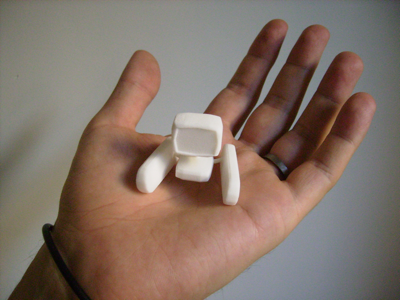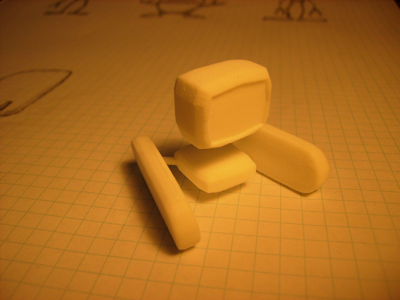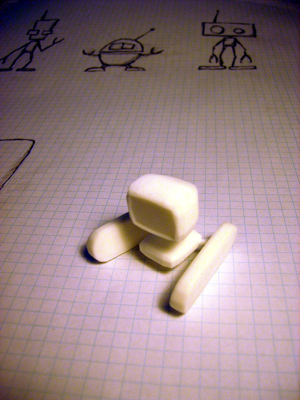Only one of the little robots that I designed survived the 3D printing process. This is because of my inexperience in designing for 3d printing. As you can see from the one that worked out, many of the connecting struts were almost too thin to be structurally sound, and this was the case in the other ones I sent off for printing.
Nonetheless there is something deeply profound and kind of humbling about holding this delicate little robot in my hand. I've spent my whole life creating virtual things - computer programs, graphics, music - and now it is possible to use the exact same skills to produce something who's physical structure may well outlast that of my own. Walking through Roman ruins earlier this year I realised that there is something about hard physical matter that is so important. Seeing a marble carving of some guy's face which has outlasted his original face by so many thousands of years really drove it home.
Last year I also read "Matter" by Iain M. Banks and although it didn't grab me as much as some of his previous books, there was an interesting argument about virtuality from one of his characters. The essence of the argument was that we don't inhabit a virtual universe overseen by some creator or creator race because any sufficiently advanced entity or culture would not allow the terrible things that can happen to sentient beings in our universe, to occur. It's sort of a meta-ethical argument saying that we can't be anywhere other than at the top of the stack of turtles, if the ethics of highly evolved intelligences are always consistent.
On a related note, this blog post makes the case that in software development the execution of an idea is much more important than the idea. I have come to believe that this is true in general. Because we now live in this highly populated and deeply connected age, ideas have become cheap. Real things, done things, executed things, are better than virtual things and ideas.
This decade is going to be fascinating because of the increasing protrusion of the virtual into the real and the modification of the real by the virtual. Bring on the self configuring household ornaments built of programmable nanotech, such as a flower which has as many petals as there are emails in your inbox.
Virtual things are ok, but real things are better.



